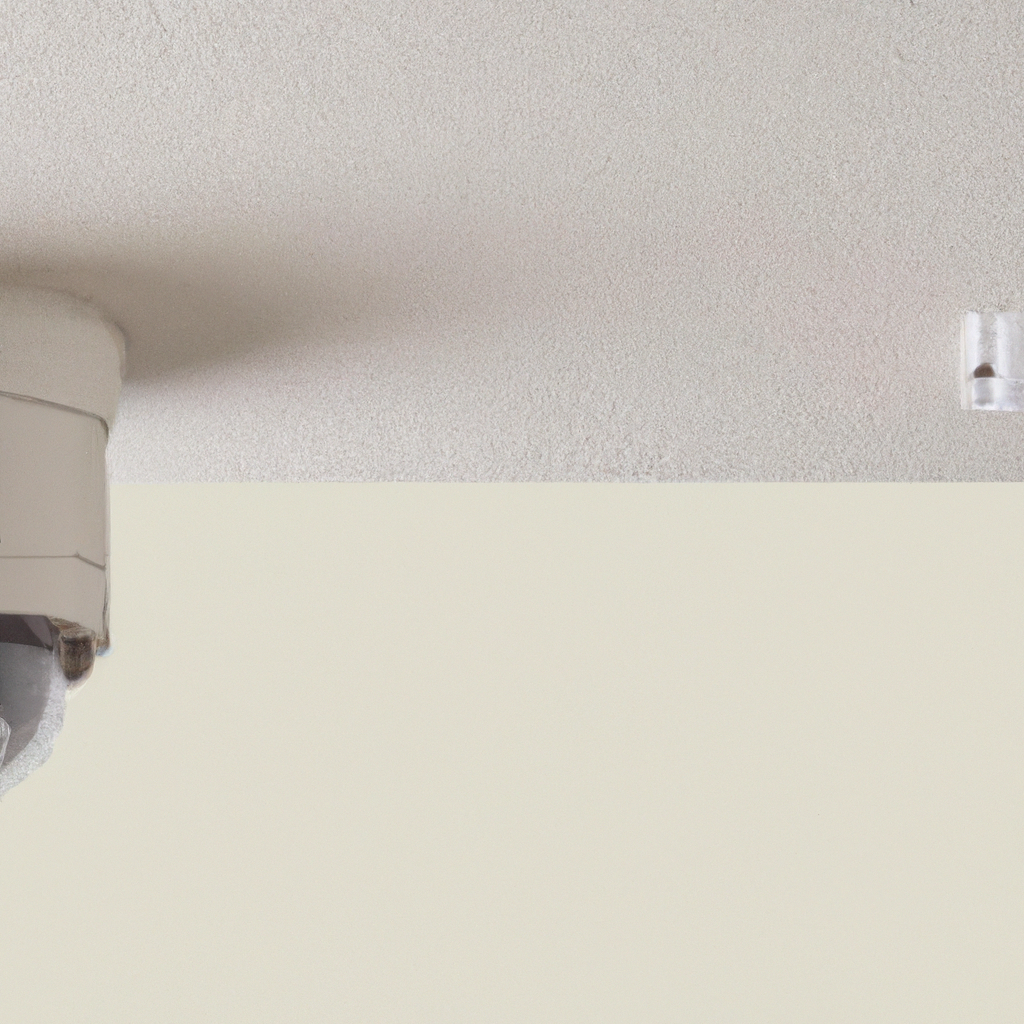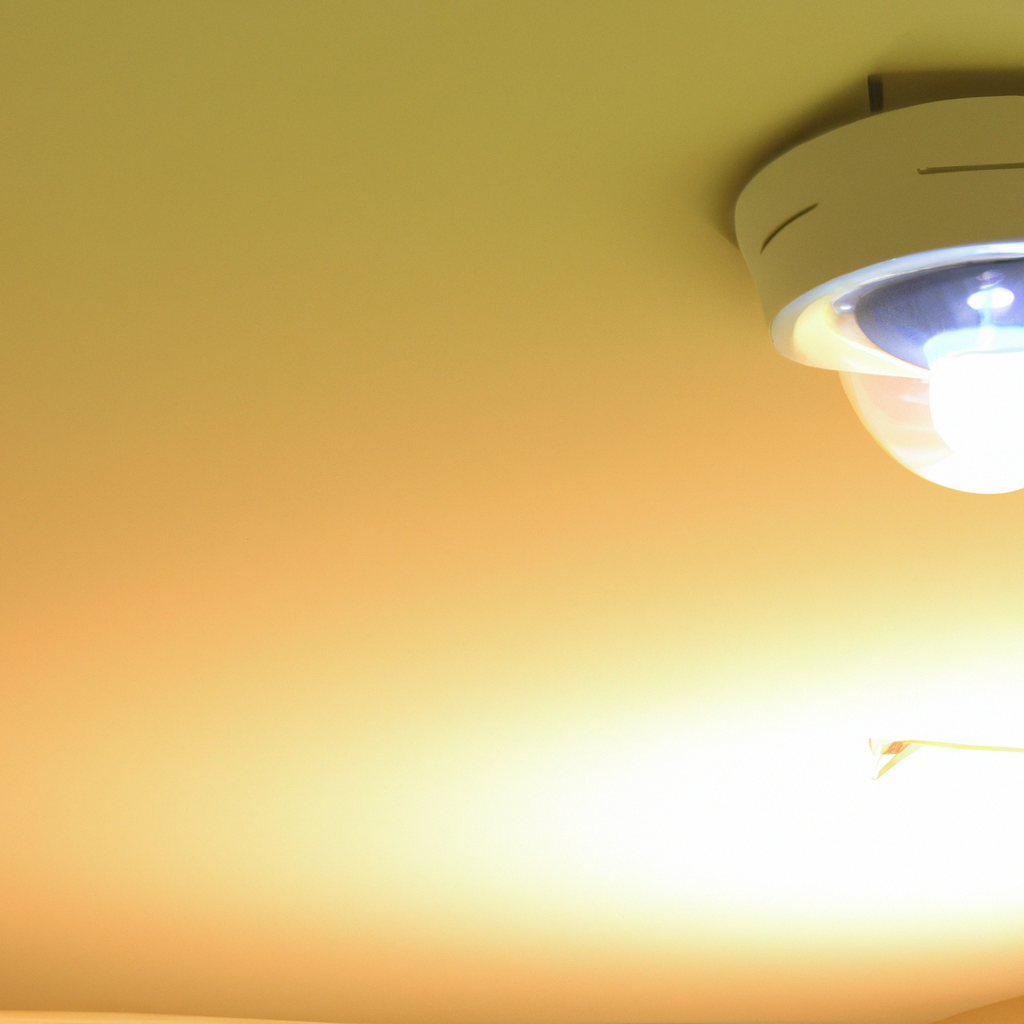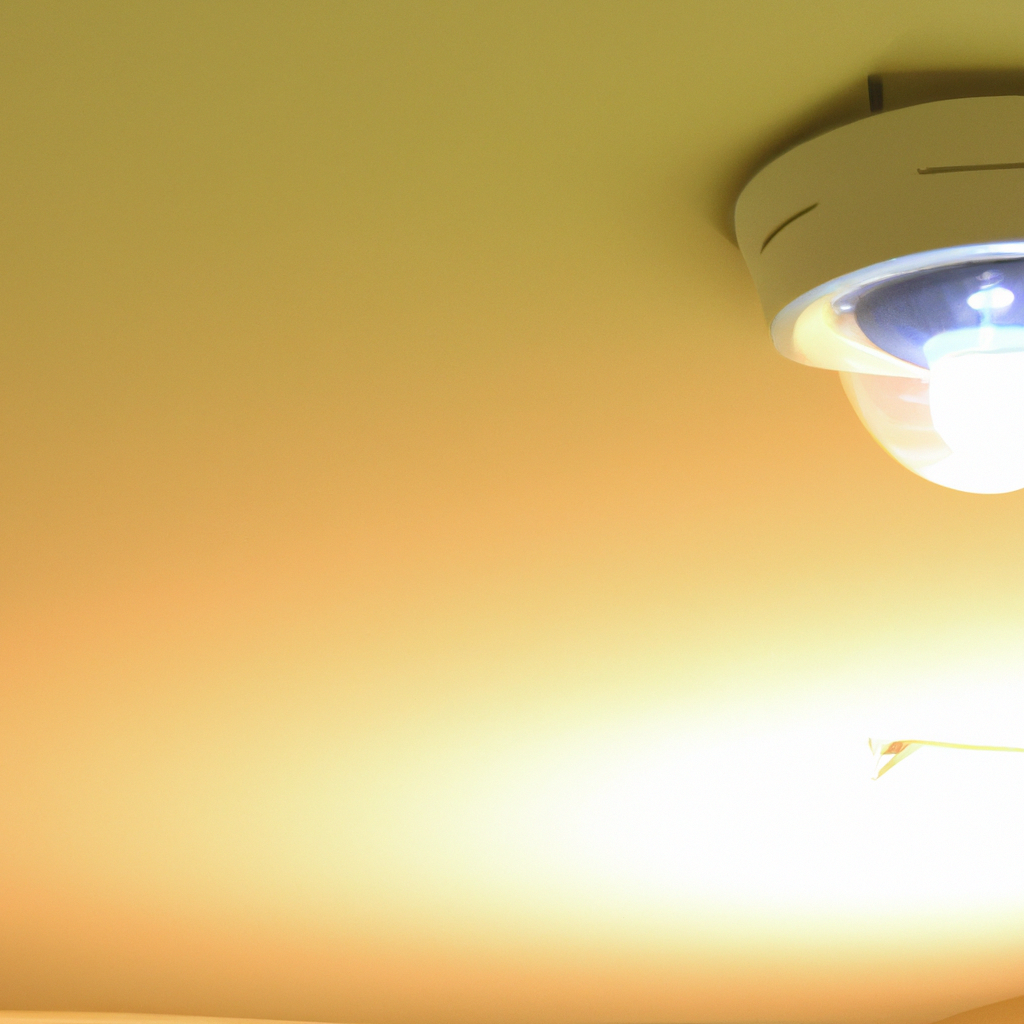In today’s fast-paced world, ensuring the safety and security of your home has become of utmost importance. That’s where motion sensors and smart lighting come into play. By seamlessly integrating into your home’s security system, these innovative technologies provide an extra layer of protection by detecting any movement and automatically illuminating the area. This not only deters potential intruders but also allows you to navigate your home safely, even in the darkest of nights. Discover how motion sensors and smart lighting work hand in hand to contribute to the overall security and peace of mind within your humble abode.

Benefits of Motion Sensors
Detection of Intruders
Motion sensors play a crucial role in detecting intruders and enhancing home security. When someone enters the range of a motion sensor, it triggers an alert, notifying you of possible unauthorized access. This quick detection allows you to take immediate action, such as contacting the authorities or activating an alarm system, thereby preventing burglaries or other criminal activities.
Deterrence of Criminal Activity
The mere presence of motion sensors can serve as an effective deterrent against criminal activity. Intruders are less likely to target a property equipped with motion sensors as they increase the risk of getting caught. The fear of being detected and identified significantly reduces the chances of break-ins, vandalism, or trespassing. Motion sensors, therefore, act as a proactive defense mechanism, discouraging criminals from targeting your home.
Increased Safety and Convenience
Motion sensors improve both safety and convenience within your home. By automatically turning on lights or activating other devices when motion is detected, they ensure well-lit pathways, reducing the risk of accidents or falls. Additionally, motion-activated lights provide convenience by eliminating the need to manually switch on lights when entering a room. This feature is especially useful during nighttime or when your hands are occupied with other tasks.
Types of Motion Sensors
Passive Infrared (PIR) Sensors
Passive Infrared (PIR) sensors are the most commonly used type of motion sensors. They detect changes in infrared radiation patterns caused by heat emitted by living beings. PIR sensors are cost-effective, easy to install, and highly reliable in indoor environments. They work by monitoring the temperature variations in their field of view and triggering an alarm or activating lights when a significant change is detected.
Microwave Sensors
Microwave sensors emit continuous low-power microwaves and measure the reflected waves from any objects in their detection range. They are highly sensitive and capable of detecting both moving and stationary objects. Microwave sensors are often used in outdoor areas as they can penetrate through materials and detect motion from a greater distance than PIR sensors. However, they may be more prone to false alarms caused by factors like wind-blown vegetation or passing cars.
Ultrasonic Sensors
Ultrasonic sensors emit high-frequency sound waves and analyze the reflected waves to detect motion. They work by measuring the time taken for the sound waves to return after hitting an object. Ultrasonic sensors are suitable for detecting motion in various environments, including large outdoor spaces and highly sensitive indoor areas. However, they may be affected by air currents and can sometimes detect motion through thin objects like curtains.
Dual Technology Sensors
Dual technology sensors combine the features of different types of motion sensors to provide enhanced accuracy and reliability. They typically integrate PIR and microwave sensors, requiring both technologies to trigger an alert or activate lights. Dual technology sensors are highly effective in reducing false alarms by ensuring a more precise confirmation of motion. These sensors are commonly used in high-security areas or situations where high reliability is necessary.
Working Principles of Motion Sensors
PIR Sensors: Heat Detection
Passive Infrared (PIR) sensors detect infrared radiation emitted by objects, including humans or animals. As living beings radiate heat, PIR sensors can detect these temperature variations. When a person or an animal moves within the sensor’s range, it detects the change in infrared radiation and triggers a response, such as activating lights or sounding an alarm. By focusing on heat signatures, PIR sensors can accurately identify human presence and distinguish it from other sources of motion.
Microwave Sensors: Doppler Effect
Microwave sensors rely on the principle of the Doppler effect to detect motion. They emit continuous microwaves, and when these waves encounter moving objects, the frequency of the reflected waves changes. By analyzing this shift in frequency, microwave sensors can determine the presence and movement of objects in their field of view. The Doppler effect allows microwave sensors to detect both the speed and direction of motion, making them suitable for monitoring large outdoor areas.
Ultrasonic Sensors: Sound Waves
Ultrasonic sensors work by emitting high-frequency sound waves and analyzing the echoes that bounce back from objects in their vicinity. These sound waves are inaudible to humans. When there is a change in the reflected sound waves due to motion, the sensor triggers a response. Ultrasonic sensors can detect both stationary and moving objects, making them ideal for identifying motion in a variety of environments. However, they may be affected by factors such as air currents or vibrations.
Dual Technology Sensors: Combination Approach
Dual technology sensors combine the principles of different types of sensors, such as PIR and microwave, to achieve higher accuracy and reliability. By requiring confirmation from multiple technologies, dual technology sensors reduce false alarms caused by environmental factors. For example, a dual technology sensor may only trigger an alert if both PIR and microwave sensors detect motion within a short timeframe. This combination approach ensures a more reliable detection of true motion events.
Integration with Smart Lighting
Enhancing Home Security
When motion sensors are integrated with smart lighting systems, they significantly enhance home security. In the event of motion detection, the smart lighting system automatically turns on lights in the area, illuminating potential intruders and deterring criminal activity. By creating the illusion of occupancy, even when you’re away, motion-activated lights can give the impression that someone is at home, reducing the risk of burglary or vandalism.
Creating a Welcoming Ambience
Smart lighting systems with motion sensors can create a welcoming ambience by providing illumination when you enter a room or approach your home. As you enter, the lights turn on automatically, eliminating the need to fumble for light switches in the dark. This feature not only enhances convenience but also adds a touch of sophistication to your home. Additionally, the ability to customize the brightness and color of the lights allows you to create the desired ambiance for different situations.
Customization and Remote Control
Integration with smart lighting enables customization and remote control of your lighting system. Using a smartphone or other smart devices, you can adjust the settings, such as the sensitivity of the motion sensors or the duration of the lights, to suit your preferences. You can also control the lights from anywhere, providing added convenience and energy efficiency. For example, if you forget to turn off the lights when leaving home, you can remotely turn them off to save energy.

Smart Lighting Features
Motion-Activated Lights
Motion-activated lights are a key feature of smart lighting systems. When motion is detected within the sensor’s range, the lights automatically turn on. This feature not only provides convenience but also serves as a security measure, illuminating potential intruders and deterring criminal activity. Motion-activated lights can be set to different sensitivity levels and duration, allowing you to customize their behavior according to your needs.
Security Lighting Modes
Smart lighting systems often include security lighting modes that offer additional protection. These modes can be set to respond differently to various scenarios. For example, the system may activate all lights and flash them rapidly when a security breach is detected, alerting both you and potential intruders. Additionally, you can program lights to simulate occupancy when you’re away, creating the illusion that someone is home and improving security.
Dimming and Color Adjustment
Smart lighting systems provide the flexibility to adjust the brightness and color of the lights. Using smart devices or voice commands, you can dim the lights for a cozy atmosphere or brighten them for functional tasks. Some systems even offer the ability to change the color temperature of the lights, allowing you to create different moods or adapt the lighting to your activities. These features enhance comfort and allow for personalized lighting experiences.
Timers and Scheduling
Smart lighting systems allow you to set timers and schedules for your lights. You can program lights to turn on and off at specific times, providing added security by simulating occupancy when you’re away. Furthermore, scheduling lights to turn on gradually in the morning can simulate a natural sunrise, promoting a smoother wake-up routine. Timers and scheduling features help optimize energy consumption and automate your lighting system based on your daily routine.
Integration with Home Automation Systems
Smart lighting systems integrate seamlessly with home automation systems, creating a cohesive and interconnected smart home. By linking your motion sensors and lighting with other smart devices, such as security cameras or door locks, you can create advanced automation scenarios. For example, when a motion sensor detects movement, the lights can turn on, the security cameras can start recording, and the door lock can be activated. This integration enhances the overall security and convenience of your home.
Installation and Placement Considerations
Strategic Placement of Sensors
Proper installation and placement of motion sensors are crucial for maximizing their effectiveness. The sensors should be strategically placed in areas where they can cover the desired range of detection without false triggers. Consider placing sensors near entry points, such as doors or windows, as well as in high-traffic areas, such as corridors or hallways. It is important to ensure that the sensors have an unobstructed line of sight and adequate coverage of the intended areas.
Avoiding False Alarms
To minimize false alarms, it is important to avoid placing motion sensors near sources of interference or areas with excessive motion. Common sources of interference include air vents, heating or cooling systems, and direct sunlight. These can cause false triggers and compromise the accuracy of the motion detection. By selecting suitable locations and adjusting the sensor’s sensitivity, you can reduce the likelihood of false alarms and ensure reliable detection.
Proper Sensor Angle and Height
The angle and height at which the sensors are installed can significantly impact their performance. Sensors should be positioned at an appropriate height that aligns with the expected motion patterns. For example, in indoor settings, sensors are typically installed at a height of 6-8 feet, while outdoor sensors may be installed higher to cover a larger area. Additionally, the sensor angle should be adjusted to cover the desired range without unnecessary blind spots or oversensitivity.
Wiring and Power Supply
Motion sensors may require a wired or wireless connection for power and communication. Wired sensors are typically connected to a power source and a control panel using electrical wiring. Wireless sensors, on the other hand, operate on batteries and communicate with the control panel using wireless technology. Consider the wiring requirements and power supply options when choosing and installing motion sensors. Wireless sensors offer more flexibility in terms of installation locations, but battery maintenance is required.

Maintenance and Troubleshooting
Regular Testing and Battery Replacement
To ensure the ongoing reliability of your motion sensors, regular testing and battery replacement are essential. Follow the manufacturer’s guidelines for testing the sensors periodically to confirm their proper functioning. Additionally, check the battery levels and replace them as recommended by the manufacturer. This proactive approach helps avoid unexpected failures and ensures that the sensors are always ready to detect motion accurately.
Cleaning and Adjusting Sensors
Over time, dust, dirt, or other debris may accumulate on the sensors, affecting their performance. Regular cleaning is important to maintain optimal functioning. Use a soft, lint-free cloth or a mild cleaning solution to gently wipe the sensor surface. Avoid using harsh chemicals or abrasive materials that can damage the sensor. Additionally, if you notice any misalignments or changes in the detection range, adjust the sensor positioning or settings as needed.
Addressing False Alarms
False alarms can be a common issue with motion sensors, especially if they are not properly calibrated or positioned. If you experience frequent false alarms, it is important to investigate the cause and take appropriate actions. Check for any obstructions or sources of interference near the sensor. Adjust the sensitivity or detection range settings to minimize false triggers. If the false alarms persist, consider consulting a professional for further troubleshooting and adjustments.
Replacing Faulty Components
In the event of a malfunctioning motion sensor or related components, it may be necessary to replace the faulty parts. If the sensor is still under warranty, contact the manufacturer or supplier for assistance. They can provide guidance on troubleshooting or arrange for a replacement if necessary. If the warranty has expired, consider consulting a professional technician or security specialist who can diagnose and replace the faulty components for optimal performance.
Common Challenges and Solutions
Interference and False Alarms
Interference and false alarms are common challenges when it comes to motion sensors. To address interference, ensure that the sensors are not positioned near sources of electromagnetic interference or direct sunlight. Adjust the settings to minimize false triggers caused by moving objects like pets or swaying plants. Fine-tuning the sensitivity and range can help reduce false alarms and ensure accurate motion detection.
Limited Detection Range
Limited detection range is another challenge that may arise with motion sensors, particularly in large outdoor areas. To overcome this limitation, consider using multiple sensors positioned strategically to cover the desired range. Additionally, choose motion sensors with a wider detection angle or adjustable sensitivity settings to expand the coverage area. By carefully planning the placement and using suitable sensors, you can overcome the limitations of limited detection range.
Weather Conditions and Obstructions
Weather conditions and obstructions can affect the performance of motion sensors, especially outdoor ones. Rain, snow, fog, or extreme temperature variations may interfere with the accuracy of motion detection. To address this challenge, choose motion sensors specifically designed for outdoor use and ensure they are weatherproof. Additionally, regularly clean the sensors to remove any obstructions caused by dirt, dust, or insects. Regular maintenance and choosing the right sensors can help mitigate the impact of weather conditions and obstructions.

Cost and ROI Considerations
Initial Investment
The cost of motion sensors and smart lighting systems can vary depending on the brand, features, and complexity of the installation. However, considering the benefits they provide, the initial investment is generally justified. While the upfront cost may seem significant, the long-term advantages in terms of improved security, energy efficiency, and convenience outweigh the initial expense. It is important to carefully evaluate the available options and choose a system that suits your needs and budget.
Potential Savings on Energy Bills
Smart lighting systems with motion sensors can lead to significant savings on energy bills. By automatically turning off lights when no motion is detected, unnecessary energy consumption is minimized. This feature is especially beneficial in areas where lights are frequently left on, such as hallways or outdoor spaces. The ability to adjust brightness and schedule lighting further optimizes energy usage. Over time, the energy savings can offset the initial investment, resulting in long-term cost savings.
Insurance Premium Reductions
Installing motion sensors and smart lighting systems may qualify you for reduced insurance premiums. Insurance providers often offer discounts for homes equipped with security systems that reduce the risk of theft or property damage. By enhancing your home security with motion sensors and smart lighting, you demonstrate proactive measures to protect your property. Contact your insurance provider to inquire about potential premium reductions and the specific requirements for eligibility.
Future Trends and Innovations
Artificial Intelligence and Machine Learning
Artificial Intelligence (AI) and machine learning technologies are revolutionizing the capabilities of motion sensors and smart lighting systems. AI algorithms can analyze motion patterns and distinguish between human activity and other sources of motion, reducing false alarms. Machine learning enables the systems to adapt and learn from user preferences, optimizing lighting settings and behavior based on individual needs. These advancements will continue to enhance the accuracy, reliability, and customization options of motion sensors and smart lighting.
Wireless Communication and Interconnectivity
Wireless communication and interconnectivity are key trends in the development of motion sensors and smart lighting systems. With wireless technology advancements, the installation process becomes simpler and more flexible. Wi-Fi, Bluetooth, or Zigbee connectivity options allow seamless integration with other smart devices, expanding the possibilities for home automation. The ability to control and monitor the sensors and lights remotely adds convenience and enhances the overall efficiency and functionality of the systems.
Energy Efficiency Improvements
Energy efficiency improvements are a significant focus for future developments in motion sensors and smart lighting systems. The use of LED lighting and advancements in sensor technology minimize energy consumption while maintaining optimal performance. Energy-efficient motion sensors with low standby power and improved sensor response contribute to reduced energy bills and carbon footprint. As sustainability becomes increasingly important, continued efforts to enhance energy efficiency will shape the future of motion sensors and smart lighting.
In conclusion, motion sensors and smart lighting systems offer numerous benefits in terms of home security, convenience, and energy efficiency. By detecting intruders, acting as a deterrent, and enhancing safety, motion sensors contribute to a secure environment. Integration with smart lighting brings additional advantages, such as creating a welcoming ambiance and providing customization and remote control options. Proper installation, maintenance, and troubleshooting ensure optimal performance, while advancements in technology promise exciting future trends and innovations. With careful consideration of cost and ROI aspects, motion sensors and smart lighting can significantly improve the safety, convenience, and efficiency of your home.











